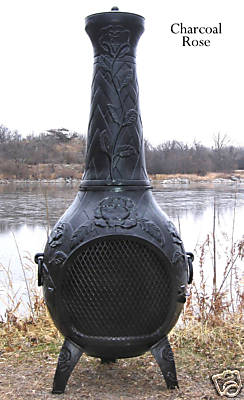Where There's Smoke, There's a Fire in New Hanover

So I've been a bad blogger -- again.
Not just because apparently I'm writing about subjects no one wants to read about, but because for too long I have ignored an actual reader. They are so few these days.
I am referring to Rob Latch of New Hanover. In September, he wrote me the following note to the gmail account that accompanies this blog (brandt.evan@gmail.com) and it raises an interesting subject as the colder months come creeping in.
His full note appears below:
Not sure where you live but in my area the "wood burning outdoor fireplace" is out of control. I am a prisoner in my house and even with windows closed (if I'm lucky enough to be home) I can't get relief from this pollution. Where are the "mad mothers" when you need them?
We ban people from smoking outdoors, and bars but allow these things to pollute.
Some facts from burningissues.org
-Largest single source of outdoor fine particles.
-As many as 60,000 US residents may die from breathing particulate at or below legal levels.
-2.7-3 million premature deaths due to wood smoke.
-Wood smoke contains over 200 chemicals and compound groups.
-EPA estimates lifetime cancer risk from wood stove smoke is 12 times greater than from equal volume of second hand smoke.
The web site lists many unbelievable statistics. In my area this problem is magnified if there is a temperature inversion with little or no wind. After an evening of campfires the smell lingers through the next day and my house smells like I've been camping.
I am not an environmental scientist but if I can't even breathe outside this can't be good for me. Rob Latch
This is honestly something I had not given much thought to until Rob wrote.
In the old house where I grew up, my parents had a new fireplace put in and I loved the nights when we had fires and sat around reading. I appointed myself the "keeper of the flame" and tended the fire with varying degrees of success.
Rob is right though. More recently, these outdoor fire pits, often called "chimineas," have become wildly popular. I have friends in Amity who have one and we sat out one right and looked at the stars while the familiar smell of wood smoke colored the mood.
But once again, the green sensibility intrudes on something that seemed harmlessly innocent....sigh.
As with most things green, however, it's not a simple yes or no, good or bad.
Consider this Oct. 21 article in The Christian Science Monitor that talks about the sudden surge in households using wood to heat their homes in the face of sky-rocketing fossil fuel prices.
(In my house, we managed to lock in an oil price just before the bottom dropped out. Ah the joys of homeownership.)
The paper, which recently announced it will no longer publish a hard copy edition, and will publish only on the Internet, reported that "Sales of wood stoves are up 55 percent so far this year over last, according to industry figures. And sales of wood pellet stoves are even hotter: up 135 percent over the same period last year."
Consider this from the CSM:
"Even the very cleanest-burning and best-maintained wood or pellet stoves release a much higher level of emissions than a typical oil furnace, a common heating fuel in the Northeastern US. Natural gas, the most popular heating fuel nationwide, burns even cleaner than oil.
Wood smoke 'is a fairly toxic cocktail,' says Lisa Rector, a senior policy analyst for NESCAUM, a nonprofit group that advises eight Northeastern US states on air-pollution control issues.
"According to the Environmental Protection Agency (EPA), wood smoke contains a number of potent health hazards, including carbon monoxide, nitrogen oxides, and fine particulates. The American Lung Association estimates that in some locales fireplaces and wood stoves are the source of 80 percent of the fine particulates found in the air."
But these new modern wood-burning stoves are not your grandfather's old pot-bellied stove.
"Since the early 1990s the EPA has mandated that new wood stoves emit no more than 7.5 grams of emissions per hour, though many models have been tested with much lower emissions. Stoves manufactured in the 1970s and ’80s emitted about 42 grams per hour," the paper reported.
"Because of its pollutants, wood-burning in general is most appropriate “at the urban fringe and beyond,” not in cities, which are already dealing with many other sources of air pollution, says John Gulland, co-founder of woodheat.org, a nonprofit website that aims to offer impartial information about firewood and wood-burning stoves."
Of course, this does not address Rob's question directly, but it does illustrate a point I've made repeatedly in dealing with environmental issues -- nothing is simple.
As for the chimeas, as I understand it, here in the borough of Pottstown, you are only allowed to burn them if you are using them to cook, which seems an unlikely as they are not easily given to that.
But out in places like New Hanover, which Rob described in a later e-mail as the "land of developments," there are probably few restrictions, and any restrictions that are in place likely h ave to do with fire safety, not air safety.
Labels: Chimneas, New Hanover, wood smoke
 RSS
RSS

